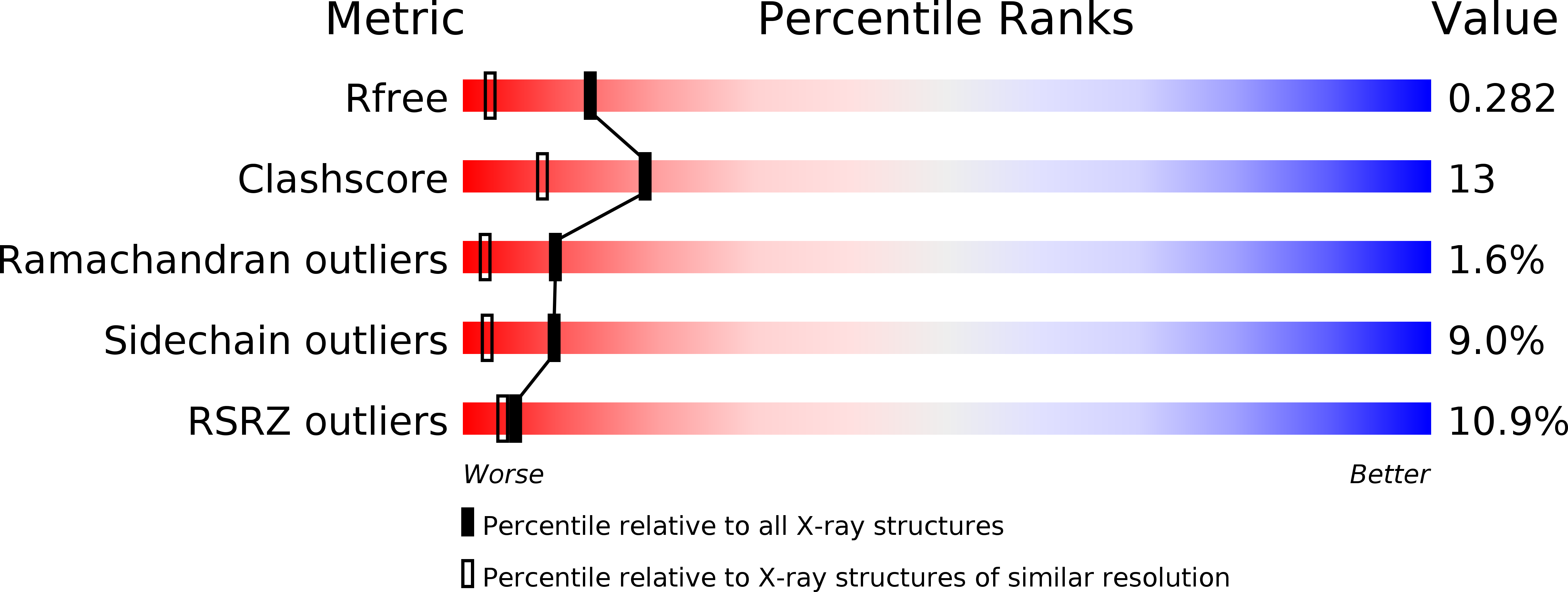Structural and functional characterization of K339T substitution identified in the PB2 subunit cap-binding pocket of influenza A virus
Liu, Y., Qin, K., Meng, G., Zhang, J., Zhou, J., Zhao, G., Luo, M., Zheng, X.(2013) J Biol Chem 288: 11013-11023
- PubMed: 23436652
- DOI: https://doi.org/10.1074/jbc.M112.392878
- Primary Citation of Related Structures:
4ENF, 4EQK, 4ES5 - PubMed Abstract:
Influenza virus RNA-dependent RNA polymerase is a heterotrimer composed of PA, PB1, and PB2 subunits. RNA-dependent RNA polymerase is required for both transcription and replication of influenza viral RNA taking place in the nucleus of infected cells. A "cap-snatching" mechanism is used to generate a 5'-capped primer for transcription in which the cap-binding domain of PB2 (PB2cap) captures the 5' cap of the host pre-mRNA. Our statistical analysis of PB2 sequences showed that residue Lys(339) located in the cap-binding pocket of H5N1 PB2cap was gradually replaced by Thr(339) over the past decade. To understand the role of this amino acid polymorphism, we solved the crystal structures of PB2cap with or without a pre-mRNA cap analog, m(7)GTP, in the presence of Lys(339) or Thr(339). The structures showed that Lys(339) contributes to binding the γ-phosphate group of m(7)GTP, and the replacement of Lys(339) by Thr eliminates this interaction. Isothermal titration calorimetry analysis showed that Thr(339) attenuated the PB2cap cap binding activity in vitro compared with Lys(339). Further functional studies confirmed that Thr(339)-PB2-containing ribonucleoprotein complex has a reduced influenza polymerase activity and RNA synthesis activity, and a reconstituted H5N1 virus containing the Thr(339) substitution exhibited a lower virulence to mice but more active replication in Madin-Darby canine kidney cells. The K339T substitution in the cap-binding pocket of PB2 modulates the polymerase activity and virulence by regulating the cap binding activity. It is informative to track variations in the cap-binding pocket of PB2 in surveillance of the evolution and spread of influenza virus.
Organizational Affiliation:
State Key Lab of Protein and Plant Gene Research, School of Life Sciences, Peking University, Beijing 100871, China.
















